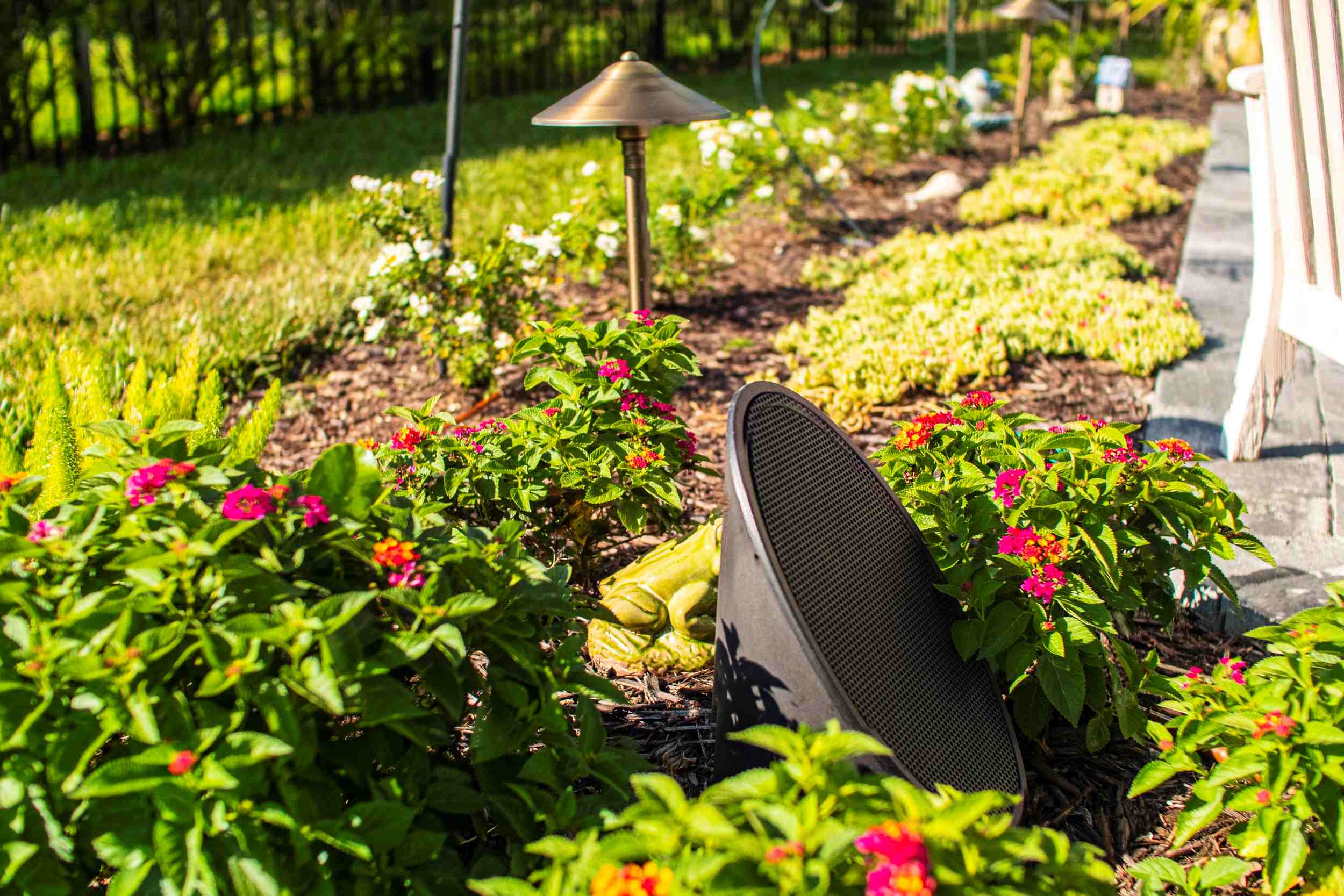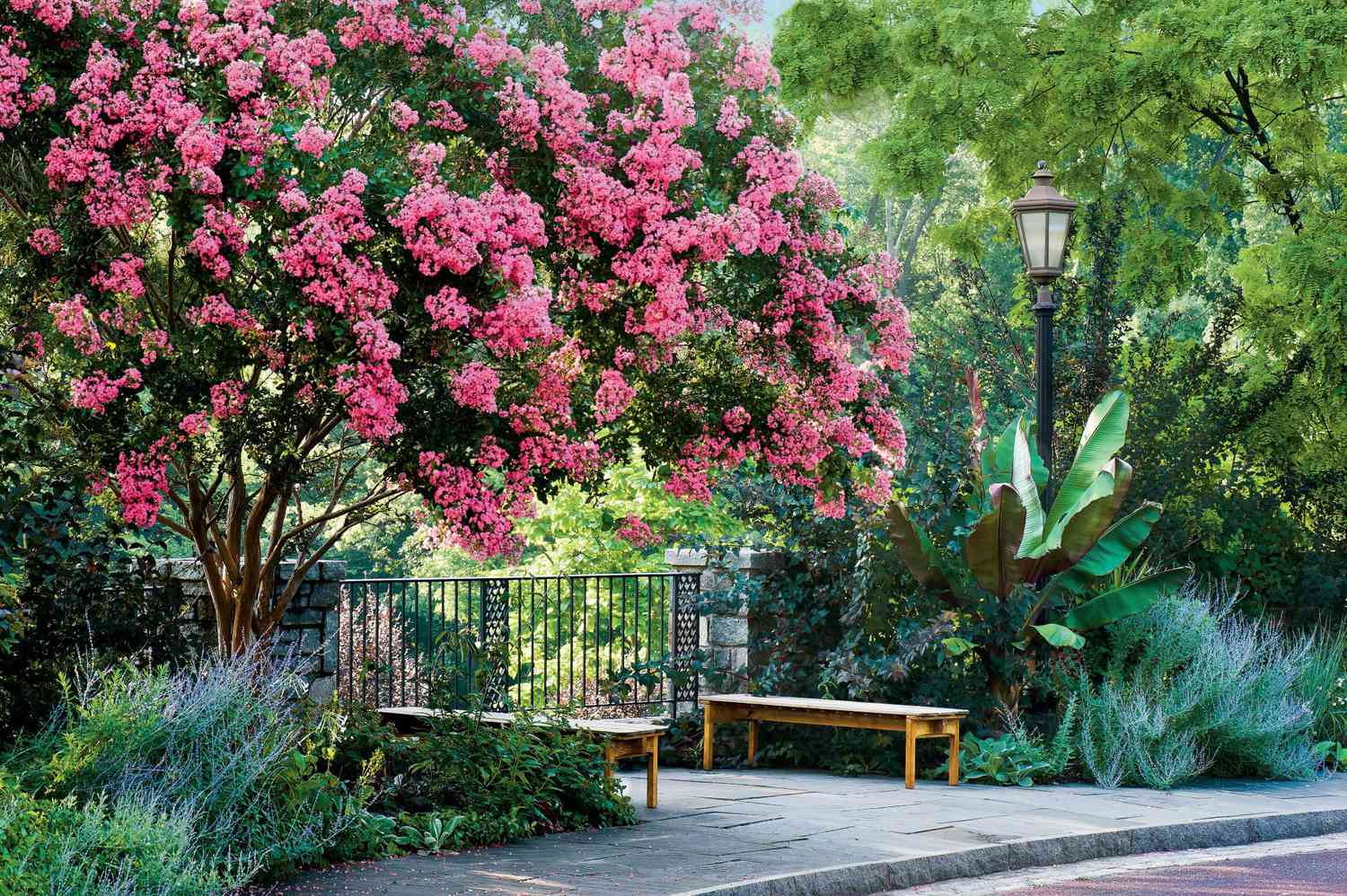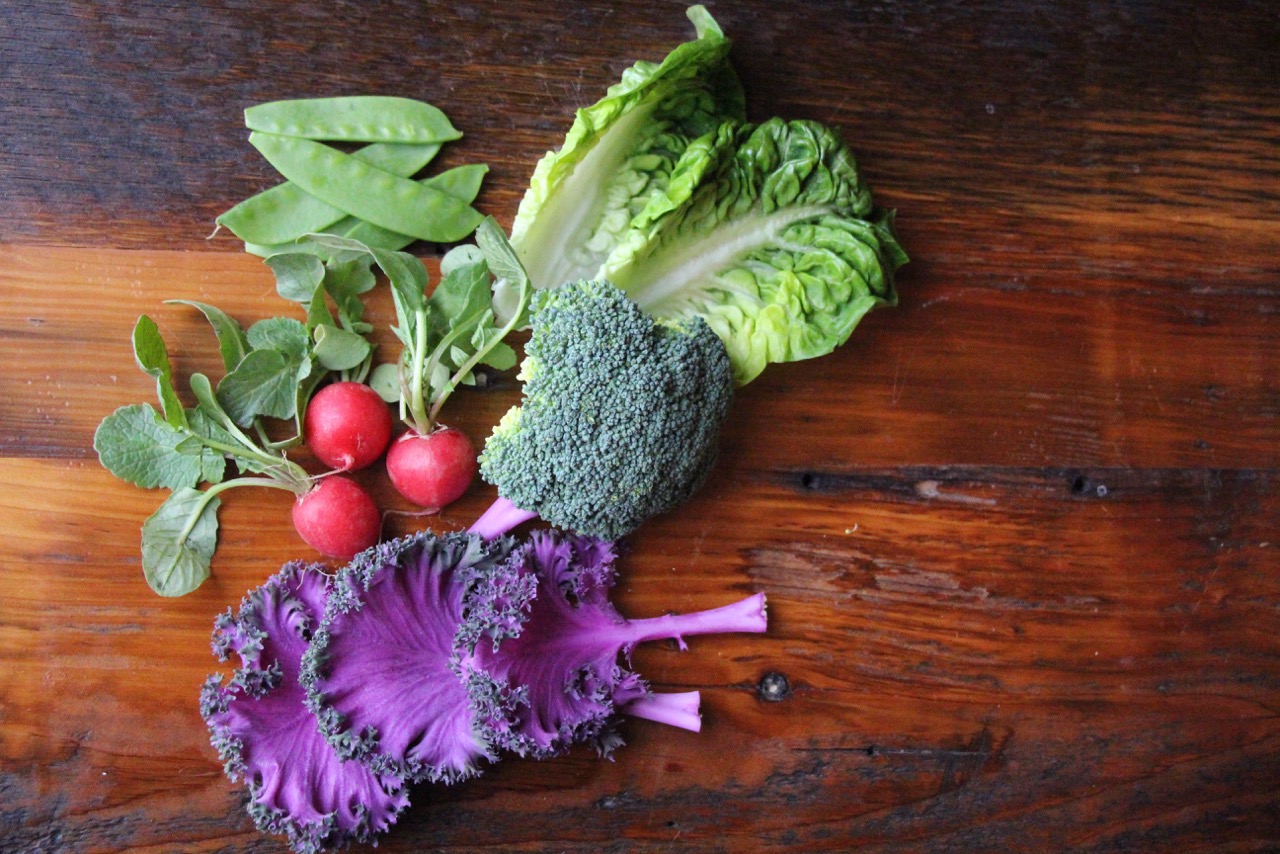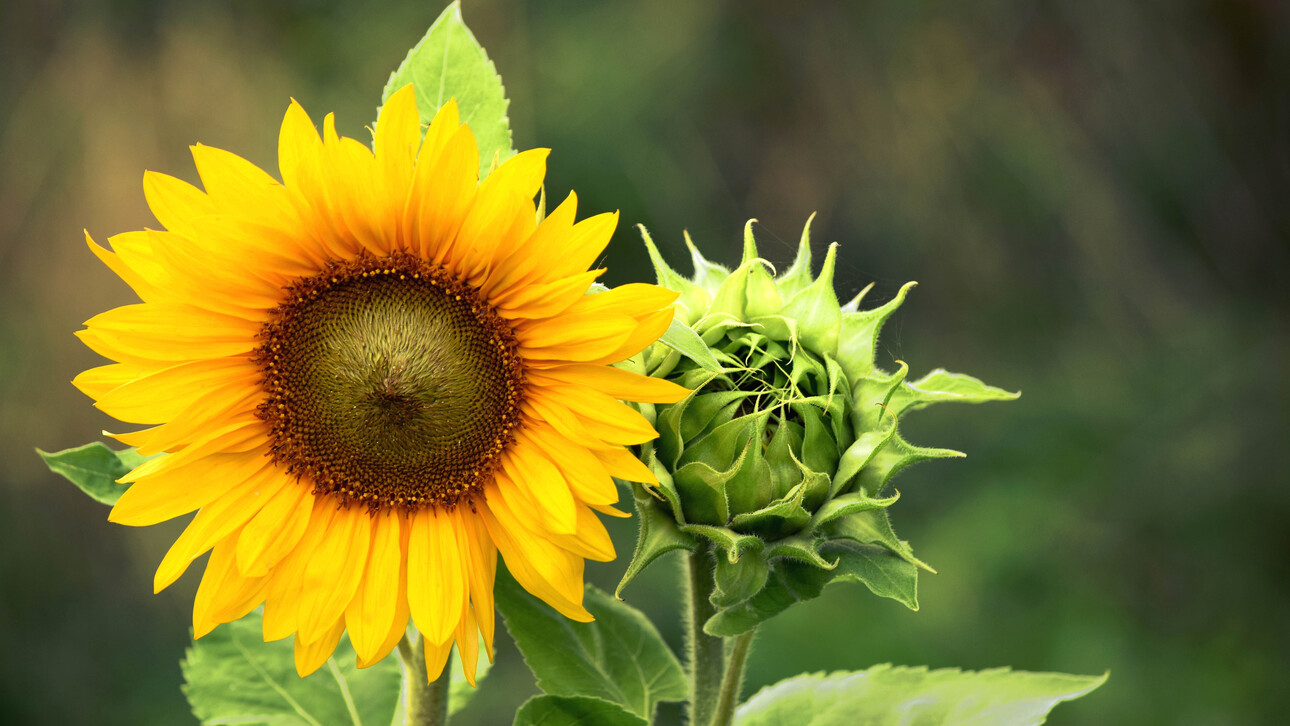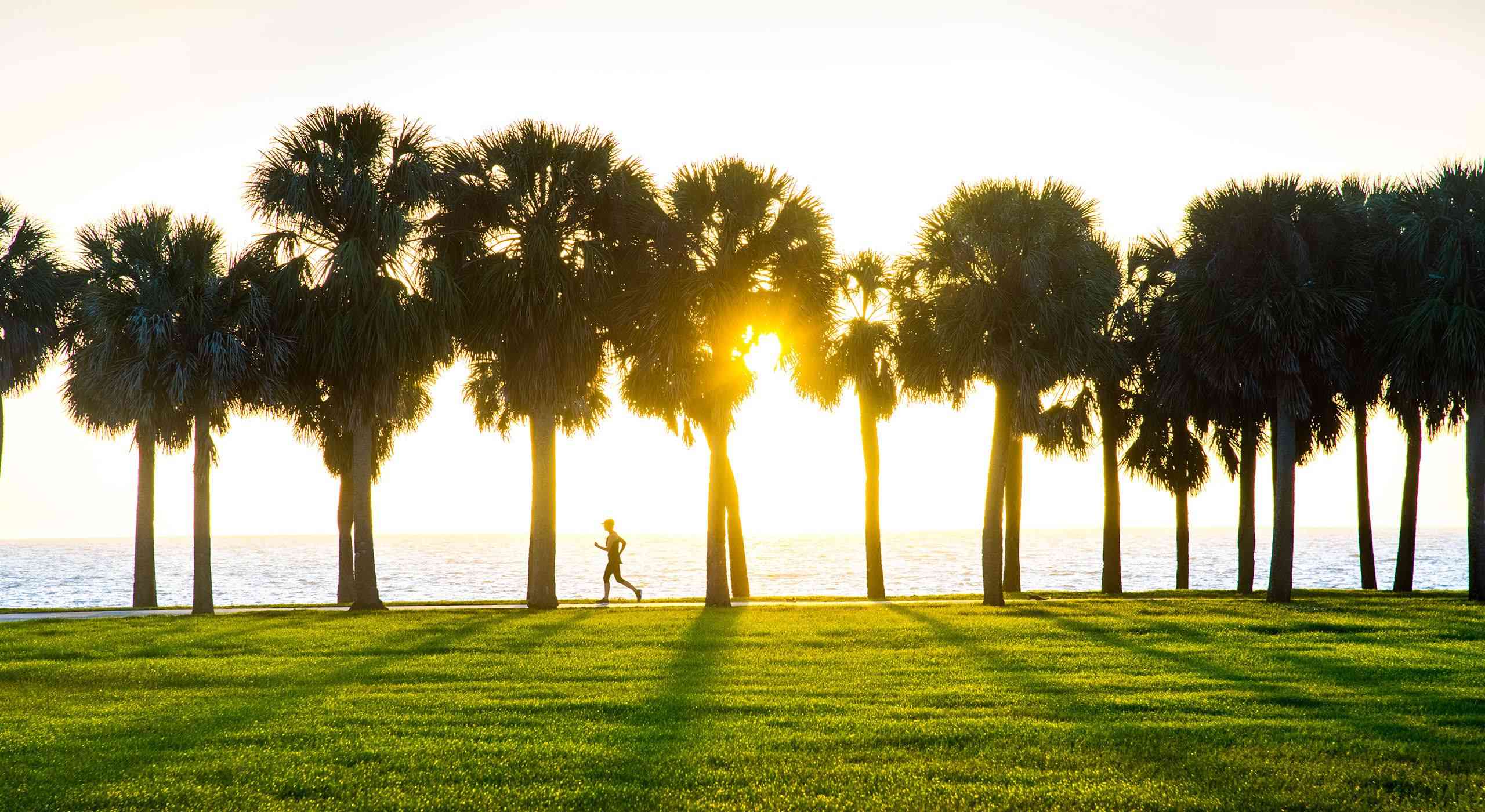Home>Types of Gardening>Ornamental Gardening>What Trees Are Blooming In Florida Right Now


Ornamental Gardening
What Trees Are Blooming In Florida Right Now
Modified: January 22, 2024
Discover the vibrant ornamental trees currently in bloom across Florida. Get inspired for your own ornamental gardening with this up-to-date guide.
(Many of the links in this article redirect to a specific reviewed product. Your purchase of these products through affiliate links helps to generate commission for Chicagolandgardening.com, at no extra cost. Learn more)
Table of Contents
Introduction
Florida, known as the Sunshine State, is a haven for ornamental gardening enthusiasts. With its warm climate and abundant sunshine, Florida provides the perfect environment for a wide variety of plants to thrive. Among the most captivating are the blooming trees that add bursts of color and fragrance to the landscape.
Whether you’re a resident looking to enhance your garden or a visitor eager to capture the beauty of Florida’s nature, it’s essential to know which trees are currently in bloom. In this article, we will explore some of the stunning blooming trees you can find in Florida right now.
From vibrant blossoms to towering canopies, each tree has its unique features that make it a sight to behold. Discover the colors that dot the Florida landscape and learn about the different trees that bring life and beauty to the Sunshine State.
Join us as we delve into the mesmerizing world of Florida’s blooming trees, and get ready to be inspired by their enchanting presence.
Blooming Trees in Florida
Florida is home to a diverse range of blooming trees that offer a striking display of colors throughout the year. These trees not only beautify the surroundings but also attract birds, bees, and butterflies, adding life and vibrancy to any garden. Let’s explore some of the stunning blooming trees you can find in Florida right now:
- Royal Poinciana: With its fiery red-orange blossoms, the Royal Poinciana is often referred to as the “flame tree.” Its wide-spreading canopy creates a stunning display, making it a popular choice for landscaping.
- Tabebuia Trees: Tabebuia trees are known for their vibrant and showy trumpet-shaped flowers in shades of pink, yellow, and lavender. These trees create a colorful spectacle, and their blooms are a welcome sign of springtime in Florida.
- Jacaranda Trees: The Jacaranda Tree graces Florida with its breathtaking clusters of lavender-blue flowers. When in full bloom, these trees create a dreamy and picturesque landscape, often referred to as a “purple rain.”
- Sabal Palms: While not technically a flowering tree, the Sabal Palm deserves a mention for its elegance and grace. The state tree of Florida, the Sabal Palm, adds a touch of tropical beauty with its iconic fan-shaped leaves and towering presence.
- Live Oaks: Live Oaks are revered for their majestic beauty and sweeping branches adorned with Spanish moss. While they may not have showy blooms, their resilience and grandeur make them an essential part of Florida’s natural landscape.
- Dogwood Trees: Dogwood trees grace Florida with their delicate flowers, typically in hues of pink and white. These small flowering trees add a touch of elegance to any garden and herald the arrival of spring.
- Magnolia Trees: Magnolia trees feature large glossy leaves and beautiful fragrant white flowers. Their blooms provide a sweet and subtle scent, making them a popular choice for gardens and landscapes.
- Bottlebrush Trees: The Bottlebrush Tree gets its name from its unique red flowers that resemble a bottlebrush. These vibrant flowers attract hummingbirds and butterflies, infusing the garden with a lively energy.
- Flame Trees: Flame trees are known for their stunning clusters of scarlet-red flowers. These trees create a striking focal point and instantly catch the attention of anyone passing by.
- Crape Myrtles: Crape Myrtles are a staple in Florida’s gardens, known for their abundant blooms in shades of pink, red, lavender, and white. These trees are highly versatile and can be pruned into different shapes, making them a favorite among gardeners.
These are just a few examples of the blooming trees found in Florida. Each of them brings its own unique charm and beauty to the landscape, making Florida a paradise for ornamental gardening enthusiasts.
Royal Poinciana
The Royal Poinciana, also known as Flamboyant Tree or Delonix regia, is a visually stunning tree that is native to Madagascar. It has become one of the most iconic flowering trees in Florida due to its vibrant display of fiery red-orange blossoms. The Royal Poinciana is often referred to as the “flame tree” because of its striking color.
This tropical tree features a wide-spreading canopy that provides ample shade and creates a stunning visual impact. When in full bloom, its branches are adorned with clusters of large, showy flowers that attract attention from afar. The blossoms have four petals and a fifth, highly modified petal called the standard or vexillum, which is larger and more vibrant than the other petals.
The foliage of the Royal Poinciana is also impressive. The tree has large, fern-like leaves that give it an airy and graceful appearance. The leaves are a bright, lush green, providing a beautiful contrast to the vibrant blossoms.
The Royal Poinciana is not only prized for its aesthetic appeal but also for its ability to withstand harsh weather conditions. It thrives in the tropical and subtropical climates of Florida, where it can be found in parks, gardens, and along streets.
One of the best characteristics of this tree is its ability to attract wildlife. The bright red-orange flowers of the Royal Poinciana serve as a magnet for hummingbirds, bees, and butterflies, adding a touch of life and movement to any garden where it is planted.
When planning to incorporate a Royal Poinciana into your landscape, it’s important to note that it is a fast-growing tree that requires plenty of space to spread its branches. It typically reaches a height of 30 to 40 feet, with a similar spread. Therefore, ensure that you provide it with enough room to grow and showcase its majestic beauty.
The Royal Poinciana is a true showstopper in Florida’s blooming trees collection. Its fiery blooms and wide-spreading canopy make it a striking focal point in any garden or street. Referred to as the “flame tree,” it adds a touch of tropical charm and creates a vibrant spectacle that is sure to capture the attention and admiration of all who encounter it.
Tabebuia Trees
The Tabebuia trees are a genus of flowering trees that belong to the Bignoniaceae family. Known for their vibrant and showy trumpet-shaped flowers, Tabebuia trees are a sight to behold. They are native to the tropical regions of Central and South America but have also been widely cultivated in Florida due to their stunning blooms.
There are several species of Tabebuia trees that can be found in Florida, each with its own unique flower color. The most common species include Tabebuia chrysotricha (Golden Trumpet), Tabebuia impetiginosa (Pink Trumpet), and Tabebuia caraiba (Yellow Trumpet).
When in bloom, these trees create a magnificent display of color, dotting the landscape with shades of pink, yellow, and lavender. The trumpet-shaped flowers cover the branches in dense clusters, attracting attention from both humans and pollinators alike.
The Tabebuia trees are deciduous, meaning that they shed their leaves during the cooler months. This allows the vibrant flowers to take center stage and steal the show. The blooming period for Tabebuia trees typically occurs in late winter to early spring, making them a delightful harbinger of warmer weather.
In addition to their visual appeal, Tabebuia trees also emit a pleasant fragrance. The scent of the blossoms adds an extra sensory dimension to their beauty, creating a serene and fragrant atmosphere in the surrounding area.
Tabebuia trees are relatively low-maintenance and can thrive in a variety of soil conditions. They prefer full sun exposure and require regular watering, especially during dry periods. These trees are also known to attract bees, butterflies, and other pollinators, contributing to the overall biodiversity of your garden.
Whether planted as a standalone specimen or as part of a landscape design, Tabebuia trees make a bold statement. Their striking colors and graceful form create an unforgettable visual impact, adding a burst of beauty to any outdoor space they inhabit.
So, if you’re looking to add a splash of color and vitality to your garden, consider planting a Tabebuia tree. With their stunning trumpet-shaped flowers and delightful fragrance, these trees are sure to captivate your senses and bring joy to the landscape.
Jacaranda Trees
The Jacaranda tree, renowned for its breathtaking clusters of lavender-blue flowers, is a true gem of Florida’s blooming tree collection. With its distinct beauty and whimsical allure, the Jacaranda tree creates a dreamy and picturesque landscape that captivates both locals and visitors.
Native to South America, the Jacaranda tree thrives in Florida’s warm climate and well-drained soil. Its elegant branches are adorned with fern-like, compound leaves that provide a delicate backdrop for the explosion of color that occurs when the tree is in bloom.
The Jacaranda blooms typically appear in the spring, transforming the tree into a canopy of vibrant lavender-blue blossoms. The clusters of trumpet-shaped flowers seemingly create a magical “purple rain,” adding a touch of enchantment to the surroundings.
The sight of a fully bloomed Jacaranda tree is a feast for the eyes. The lavender-blue flowers, contrasted against the bright blue sky, create a stunning visual spectacle that leaves a lasting impression. The fallen blossoms form a colorful carpet beneath the tree, adding to the overall beauty.
Aside from their aesthetic appeal, the Jacaranda flowers also emit a gentle fragrance, enhancing the sensory experience when near the tree. The perfume, reminiscent of a tropical paradise, adds another layer of charm to this magnificent specimen.
Jacaranda trees are highly regarded for their adaptability and ability to thrive in various soil conditions. They are commonly planted along streets, in parks, and as ornamental focal points in residential gardens. Due to their size and spreading branches, Jacaranda trees offer ample shade, making them a perfect spot to relax and enjoy the beauty of nature.
As the seasons change, the Jacaranda tree undergoes a transformation of its own. After the blossoms fade, the tree produces long, bean-like seed pods that turn brown and hang from the branches. While not as visually striking as the flowers, these pods add an element of interest and create an attractive contrast against the foliage.
If you’re fortunate enough to have a Jacaranda tree in your vicinity, take the time to fully appreciate its breathtaking beauty. From its delicate compound leaves to its vibrant lavender-blue blooms, the Jacaranda tree is a symbol of grace and elegance. It is a majestic presence in Florida’s landscape, enchanting all who encounter it.
Sabal Palms
While not technically a flowering tree, the Sabal Palm (Sabal palmetto) deserves a mention for its iconic beauty and significance in Florida’s landscape. This majestic tree, with its distinctive fan-shaped leaves and towering presence, is the state tree of Florida.
Sabal Palms are native to the southeastern United States, including Florida, and can be found in both coastal and inland areas. Their impressive height, reaching up to 80 feet, makes them a prominent feature in the Florida scenery.
One of the notable characteristics of the Sabal Palm is its fan-shaped leaves, also known as fronds. These leaves can grow up to six feet in length and are divided into many segments that radiate from a central point, creating an aesthetically pleasing symmetry.
Although the Sabal Palm does not produce showy flowers like some of the other trees mentioned, it occasionally produces small flowers that develop into clusters of black, berry-like fruits. These fruits serve as a food source for various wildlife, including birds and small mammals.
The Sabal Palm has strong cultural significance in Florida and is often associated with tropical landscapes and coastal environments. Its ability to withstand strong winds and salt spray makes it a common sight in coastal regions, where it provides a sense of resilience and natural beauty.
Furthermore, the Sabal Palm has historical importance and has been used by indigenous peoples for thousands of years for various purposes. Its sturdy trunk was used for building shelters and constructing tools, while the palm leaves were utilized for weaving baskets and making thatch roofs.
Today, Sabal Palms are often planted as ornamental trees in gardens and parks due to their grandeur and ability to create a tropical ambiance. Their towering presence adds a sense of drama and elegance to any landscape, making them a favored choice among landscapers and garden enthusiasts.
It’s important to note that Sabal Palms thrive in well-drained soils and full sun exposure. They are relatively low-maintenance trees, resistant to pests and diseases, making them a reliable addition to any Florida garden.
Whether lining the streets, dotting the coastline, or standing tall in gardens, the Sabal Palm exudes a timeless beauty and serves as a symbol of Florida’s rich natural heritage. Its towering stature and graceful fronds make it an unmistakable presence, adding a touch of tropical charm to the Sunshine State.
Live Oaks
Live Oaks (Quercus virginiana) are revered for their majestic beauty and impressive longevity. These iconic trees are a common sight in Florida, with their sprawling branches and the iconic trailing Spanish moss creating a distinct and enchanting presence.
Despite not being known for showy blooms, Live Oaks are treasured for their resilience and grandeur. They are known to live for several centuries, with some specimens in Florida estimated to be over 500 years old. Their longevity and ability to withstand harsh conditions make them a beloved part of the state’s natural landscape.
Live Oaks are characterized by their large spreading canopies, which can reach an impressive span of over 100 feet. The branches cascade downward, giving the tree a graceful and majestic appearance. The leaves of the Live Oak are evergreen, providing year-round beauty and shade.
One of the defining features of Live Oaks is the presence of Spanish moss that drapes from their branches. While not technically a moss, this epiphytic bromeliad adds an ethereal and romantic quality to the tree. Bearded with moss, a Live Oak becomes a living work of art, evoking a sense of mystique and antiquity.
Live Oaks play a vital ecological role by providing habitat and shelter for various wildlife species. The dense foliage and sturdy branches offer nesting spots for birds, while the acorns produced by the tree serve as a food source for squirrels, deer, and other animals.
One of the remarkable characteristics of Live Oaks is their ability to adapt and thrive in different environments. They can tolerate both coastal and inland regions, thriving in a range of soil conditions. Additionally, Live Oaks have a strong tolerance for salt spray, making them a common sight in coastal areas.
Due to their stunning presence and cultural significance, Live Oaks are frequently incorporated into landscape designs and are commonly planted along streets and in parks. Their sprawling canopies provide shade and evoke a sense of tranquility, making them ideal for creating peaceful outdoor spaces.
Walking under the majestic branches of a Live Oak is an experience that connects us to the history and natural beauty of Florida. Whether providing shade on a hot summer’s day or standing tall against the changing seasons, Live Oaks are a testament to the enduring power and timeless allure of nature.
Dogwood Trees
The Dogwood tree, known for its delicate and elegant blooms, is a beloved addition to the ornamental gardens of Florida. There are several species of Dogwood trees, but the most common and sought after is the flowering Dogwood (Cornus florida).
Native to eastern North America, the Dogwood tree showcases its beauty in early spring when it bursts into a profusion of flowers. These flowers, which come in shades of pink and white, create a stunning display against the backdrop of the emerging green foliage.
The flowers of the Dogwood are unique in their appearance. The four bracts that surround the small cluster of tiny flowers beneath give the appearance of large petals. This distinct feature adds to the charm and allure of the tree’s blossoms.
In addition to their visual appeal, Dogwood flowers emit a subtle and pleasing fragrance, attracting bees and other pollinators. As the flowers mature and fade, they are replaced by clusters of bright red berries. These berries serve as a food source for birds and wildlife.
While the flowers are the main attraction, Dogwood trees also offer visual interest throughout the year. In the fall, the foliage transitions to vibrant shades of red, orange, and purple, creating a stunning autumn display. In the winter, the tree’s branching structure is exposed, showcasing its unique architectural beauty.
When planting Dogwood trees in Florida, it is important to consider their preference for partial shade. They thrive in well-drained soil and benefit from regular waterings, particularly during hot and dry periods.
Aside from their aesthetic value, Dogwood trees hold cultural and symbolic significance. The tree is often associated with Easter and is hailed as a symbol of resurrection and renewal. Additionally, Dogwood trees have a rich folklore and have been celebrated for their medicinal properties.
Whether planted as standalone specimens or incorporated into garden designs, Dogwood trees add elegance and charm to any landscape. Their delicate flowers, striking foliage, and unique branching structure make them a focal point and a source of admiration for all who encounter them.
When you stroll through a garden adorned with Dogwood trees, you are treated to a visual feast of beauty and serenity. The blossoms’ soft hues and the tree’s graceful presence evoke a sense of tranquility and a connection to the wonders of the natural world.
Magnolia Trees
Magnolia trees are beloved for their timeless beauty, fragrant blossoms, and glossy evergreen leaves. These iconic trees are a symbol of purity, grace, and elegance, making them a cherished addition to gardens and landscapes in Florida.
There are several species of Magnolia trees, but the Southern Magnolia (Magnolia grandiflora) is perhaps the most well-known and widely planted in Florida. This majestic tree has large, dark green leaves with a glossy sheen, providing a stunning backdrop for its exquisite flowers.
The Magnolia tree boasts impressive and fragrant white blossoms that can span up to 12 inches in diameter. These blossoms have a sweet and subtle scent that fills the air, enticing pollinators such as bees and butterflies.
While the showy flowers are the main attraction, Magnolia trees offer visual interest throughout the year. In cooler months, the trees bear cone-like fruits that add a distinct texture to the branches. Additionally, the dark green leaves provide a lush and verdant backdrop, creating a year-round source of beauty.
Magnolia trees are known for their adaptability and can thrive in a variety of soil conditions. They prefer full sun to partial shade and require well-drained soil. Proper irrigation is essential during dry spells to ensure the tree’s health and vitality.
Aside from their ornamental value, Magnolia trees hold historical and cultural significance. They have long been admired for their beauty and have even been featured in literature, art, and music. Furthermore, Magnolia trees have been used in traditional medicine for various purposes, including treating anxiety and respiratory ailments.
When selecting a Magnolia tree for your garden, consider the space available as some species can grow quite large. However, there are cultivars available that are more compact in nature, making them suitable for smaller gardens.
From their elegant blooms to their glossy foliage, Magnolia trees bring a touch of classic beauty to the Florida landscape. Their presence evokes a sense of nostalgia and grace, reminding us of the timeless appeal of nature’s wonders.
When walking beneath the shade of a Magnolia tree and inhaling the sweet fragrance of its blooms, you can’t help but be reminded of the simple pleasures found in nature. These trees are a testament to the enduring beauty that Mother Nature bestows upon us, creating moments of tranquility and awe.
Bottlebrush Trees
Bottlebrush trees, scientifically known as Callistemon, are visually striking trees that get their name from their unique red flower spikes that resemble a bottlebrush. These trees are native to Australia but have become popular in Florida due to their vibrant and eye-catching blooms.
The bottlebrush tree is a member of the myrtle family and is characterized by its colorful and cylindrical flower spikes. While the most common color is red, there are also other varieties with flowers in shades of pink, purple, and yellow.
When in bloom, bottlebrush trees create a cascade of color, attracting attention from both humans and pollinators. Their nectar-rich flowers are a magnet for hummingbirds, bees, and butterflies, bringing a lively and animated atmosphere to any garden or landscape they inhabit.
In addition to their striking flowers, bottlebrush trees have narrow, evergreen leaves that provide a lush and attractive backdrop year-round. The foliage tends to be dense, making these trees suitable for creating privacy screens or hedges.
Bottlebrush trees are relatively low-maintenance and can thrive in a range of soil types. They prefer full sun exposure but can tolerate partial shade as well. These trees are also well-adapted to Florida’s warm and humid climate, making them a resilient choice for gardeners.
Due to their size and shape, bottlebrush trees are commonly planted as accent trees in gardens and landscapes. They add a pop of color and create focal points that draw the eye. These trees are also suitable for container planting, making them a versatile choice for patios and balconies.
One of the standout features of bottlebrush trees is their ability to tolerate drought conditions. Once established, they can handle periods of limited water, making them a suitable option for Florida’s dry seasons. However, regular watering during extended dry spells is still recommended to maintain the health and vitality of the trees.
Bottlebrush trees are a beautiful addition to any Florida garden, infusing vibrant colors and attracting a variety of pollinators. Their distinctive flower spikes and evergreen foliage provide year-round visual appeal, making them a delightful choice for both landscapers and gardening enthusiasts.
So, if you’re looking to add a touch of uniqueness and vibrancy to your outdoor space, consider planting a bottlebrush tree. Prepare to be mesmerized by their charm and enjoy the lively energy they bring to your garden.
Flame Trees
Flame trees, scientifically known as Delonix regia, are appropriately named for their stunning clusters of scarlet-red flowers that resemble flickering flames. Native to Madagascar, these trees have found a home in the warm climate of Florida, where they create a dazzling display of color.
When in bloom, flame trees transform the landscape into a vibrant palette of red. The clusters of blossoms cover the tree’s branches, creating a mesmerizing sight that is hard to miss. The vibrant red flowers stand out against the backdrop of the tree’s fern-like, green leaves.
Flame trees are deciduous, shedding their leaves during the winter months. This allows the spectacular blossoms to take center stage, drawing attention and admiration. The fallen flowers form a carpet of red around the base of the tree, adding to the tree’s charm.
In addition to their striking beauty, flame trees also offer a respite from the scorching Florida sun. The wide-spreading canopy provides ample shade, making them a popular choice for parks, gardens, and other outdoor spaces where people seek relief from the heat.
While the focal point of the flame tree is undoubtedly its blossoms, its trunk and branches also possess a unique appeal. The trunk is smooth and gray, creating an interesting contrast against the fiery blooms. The branches stretch out gracefully, creating an elegant and picturesque silhouette.
Flame trees are adaptable and can grow in various soil conditions, but they prefer well-drained soil and full sun exposure. They are also known for their resilience, withstanding drought conditions once established.
Planting a flame tree can bring a touch of tropical beauty and drama to your Florida landscape. Whether as a standalone specimen or as part of a tree-lined avenue, flame trees add a fiery burst of color and create a memorable focal point in any outdoor setting.
Take the opportunity to witness the splendor of flame trees when they are in bloom. Their scarlet-red flowers captivate the senses and remind us of the incredible diversity and beauty of nature. With their striking blossoms and graceful structure, flame trees truly embody the essence of tropical magnificence.
Crape Myrtles
Crape Myrtles (Lagerstroemia indica) are known for their vibrant, show-stopping blooms and graceful form, making them a popular choice for gardens and landscapes in Florida. These ornamental trees originate from Asia, but they have become a beloved fixture in the Sunshine State’s gardening scene.
What sets crape myrtles apart is their abundant and long-lasting flowers that bloom from summer through fall. They come in a wide range of colors, including shades of pink, purple, red, and white, offering versatile options for adding a burst of color to any outdoor space.
The flowers of crape myrtles gather in clusters at the tips of the branches, creating a feathery, cloud-like appearance. As the tree matures, the clusters elongate and become heavier with blossoms, creating a breathtaking display of color and texture.
Besides their dazzling blooms, crape myrtles also offer interest in their bark and foliage. The bark exfoliates and peels, revealing a mosaic-like pattern of colors that can range from creamy white to cinnamon-brown. This adds a unique and rustic charm to the tree, especially during the dormant season.
The leaves of crape myrtles are elongated and glossy, providing a lush backdrop to the profusion of flowers. In autumn, the foliage turns shades of orange and red, offering an additional burst of color before the tree sheds its leaves.
Crape myrtles are known for their adaptability and are well-suited for Florida’s climate. They can withstand hot and humid conditions, and once established, they are relatively drought-tolerant. These trees thrive in full sun exposure, which promotes optimal flowering and vibrant foliage.
Another advantage of crape myrtles is their ability to be pruned and shaped into various forms, including shrubs, small trees, and multi-stemmed specimens. This makes them versatile options for creating privacy screens, hedges, or focal points in the garden.
Whether planted individually or in groups, crape myrtles add a captivating charm to any landscape. With their exquisite blooms, attractive bark, and colorful foliage, they provide year-round visual interest and contribute to the overall beauty of the outdoor environment.
When selecting crape myrtles for your garden, consider the size and color that best suits your space and preferences. With their stunning blooms and dynamic nature, crape myrtles are sure to make a striking statement and become a treasured part of your Florida garden.
Conclusion
Florida is a haven for ornamental gardening enthusiasts, offering a wide variety of blooming trees that add beauty, color, and fragrance to the landscape. From the fiery blossoms of the Royal Poinciana to the delicate flowers of the Dogwood tree, each tree brings its own unique charm and creates a captivating presence.
Whether you’re a resident looking to enhance your garden or a visitor eager to explore Florida’s natural wonders, the blooming trees discussed in this article are sure to inspire and captivate. The Royal Poinciana’s vibrant red-orange blooms and wide-spreading canopy make it a striking focal point, while the delicate and elegant flowers of the Dogwood tree add a touch of elegance to any garden.
The Jacaranda tree’s clusters of lavender-blue flowers create a dreamy and picturesque landscape, while the Magnolia tree enchants with its fragrant, white blossoms and glossy evergreen leaves. The Bottlebrush tree’s unique red flower spikes infuse vibrant colors into the garden, while the Flame tree’s scarlet-red blossoms resemble fiery flames.
The Sabal Palm, Live Oak, and Crape Myrtle may not be known for their showy blooms, but they each bring their own distinctiveness and significance. The Sabal Palm’s towering presence and iconic leaves add a touch of tropical beauty, while the Live Oak’s sprawling branches and Spanish moss create a sense of grandeur. The Crape Myrtle, on the other hand, dazzles with its abundant and vibrant flowers that bloom from summer through fall.
Whether you’re seeking a burst of vibrant color or a timeless and elegant presence, these blooming trees offer a variety of options for enhancing your garden or the surrounding landscape. Each tree has its own unique requirements and adapts to different growing conditions, ensuring that there is a perfect fit for every space.
By incorporating these stunning blooming trees into your outdoor space, you can create a sanctuary of natural beauty, attracting birds, bees, and butterflies while enjoying the captivating sights and scents. Explore the wonders of Florida’s ornamental gardening scene and let these blooming trees inspire you to create a vibrant and enchanting space that brings joy and tranquility.
